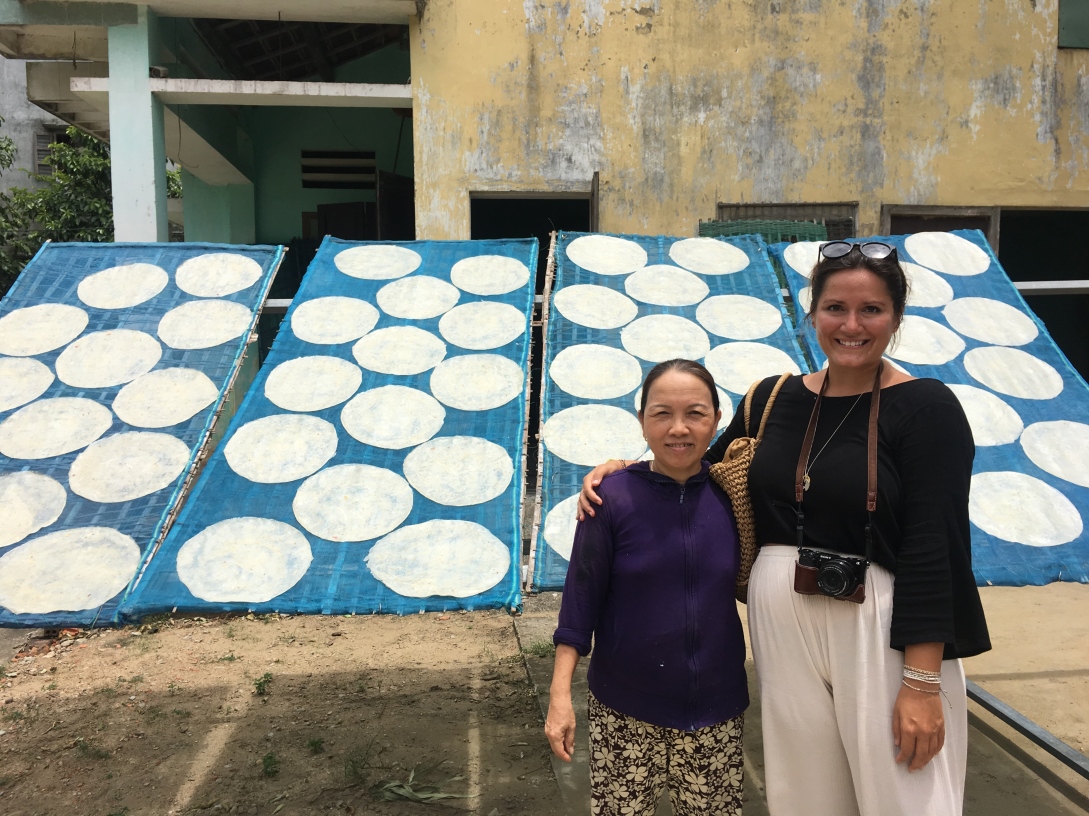
Nestled on a quaint country road between Hoi An and My Son is a family home that moonlights as a rice paper-making facility. A lovely lady named Hoa crafts the famous Vietnamese snack, known locally as banh cha. She gently holds my hand as she taps her arm with her free hand to show respect as we greet each other. When I ask what her name means in Vietnamese she bursts into a proud smile and explains that Hoa means flower, which is perfectly fitting for such a welcoming woman.
I’m beckoned inside the open-air rice paper factory where Hoa works alone every single day making upwards of 300 pieces of rice paper. She learned the ancient technique of crafting rice paper from her mother, who learned from her mother. Although the business has been in operation for three generations, it will close when Hoa decides to stop working.
READ MORE: This woman helped us find the best pho in the world
In Vietnam, rice paper making is a job exclusively for women. Hoa only has sons and isn’t interested in bringing her son’s wives into the family business. For over 20 years, Hoa has laboured to provide rice paper to her neighbours at the local market. She doesn’t want her daughters-in-law to take over her grandmother’s business as there isn’t much money to be made from creating and selling rice paper.
Hoa walks me through her tried-and-true routine of making the perfect piece of rice paper. Her days start at dawn when she begins the process of grinding the rice that has soaked in water overnight. Although the rice is soft, it’s certainly no easy task to grind it down into liquid form. Hoa has enviable upper body strength from her years of turning grains of rice into rice milk.

Learning the process of making rice paper | Photo by Lola Mendez
She adds just a dash of water and a spoonful of her freshly harvested black sesame seeds to the rice milk. Hoa expertly pours the mixture onto the piping hot stove and spins the concoction around to cover the circular surface. She handles the impossibly thin pancake with a homemade rolling pin-like device covered in fabric, so it won’t tear the delicate rice paper. I try to roll the paper myself and end up with a sticky, chunky mess. Hoa repeats the process without much effort and laughs at my failed attempt.
The cooking time is over in seconds, and Hoa moves onto the next batch before checking on the dozens of banh cha that are already drying in the piping hot sun. The rice paper must be grilled once more over hot coals in order to achieve the optimal crunchy texture for yin and yang cake, or left wet for making spring rolls.

Rice paper drying in the sun | Photo by Lola Mendez
Hoa’s entire rice paper production is farm-to-table in nature and quite literally has zero food miles. The rice she uses is grown in a field across the street from her home. She utilises the dry rice hulls to feed the fire that heats the iron stove where she labours daily making the rice paper. The black sesame that adds flavour to the banh cha is harvested from a flower garden in front of her house. When it’s time to take the finished product to the market in her village, she simply stacks the rice paper into bamboo baskets that she’s strapped to the back of her bicycle and rides to her stall. It’s heart wrenching that such an environmentally and socially sustainable business will soon cease to exist, but getting to see the process was a truly memorable experience.
You can experience the art of making rice paper for yourself on our Hoi An Discovery tour.